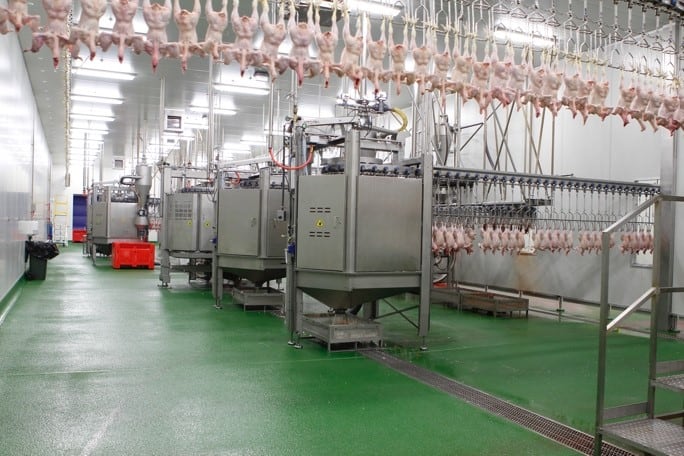Employee safety always has been and will always be a priority for the chicken industry. Chicken processors continue to focus their efforts on preventing workplace injuries by implementing ergonomics and medical intervention steps, while continually introducing new technology and automation in the workplace. These efforts are showing positive results, demonstrating the vast advancements the industry has made in improving employee safety.
One topic of interest is the pace of the chicken processing line, commonly referred to as “poultry line speeds.” Here are four things you need to know about poultry line speeds in a chicken processing plant:
1) When you hear or read about poultry line speeds, what is being discussed is known in the industry as the “evisceration line.” The evisceration line is the part of the plant where the birds’ organs are removed and the carcass is cleaned, washed, and inspected. This part of the process is highly automated, and it is not the part of the plant where the birds are slaughtered or where workers cut up and debone the chicken for packaging. Due to advanced machinery and technology, there are very few workers stationed in this section of the plant. The part of the plant where there are more workers who cut up and package the chicken typically operates at one-fifth of the speed of the evisceration line.
2) Poultry line speeds are regulated by the United States Department of Agriculture (USDA). Line speeds are based on many factors, including a plant being able to maintain process control, producing safe food, keeping workers safe, and staffing considerations. If a plant determines that one of these factors calls for slowing down the line, the plant will do so. USDA has the regulatory authority to slow down or stop a production line in poultry processing plants if deemed unsafe.
3) Increased line speeds of up to 175 birds per minute (175) have been around for 25 years. A pilot program using almost two dozen chicken processing plants was initiated under the Clinton administration allowing line speeds of up to 175 bpm. The modernized system has been studied, debated, and reviewed in depth for more than two decades to assure its effectiveness in further modernizing chicken inspection while improving food safety and protecting workers. In fact, while the industry has been safely increasing line speeds over the past 25 years, the poultry industry’s injury and illness rate has fallen 84 percent, according to the Department of Labor.
4) There is no evidence to suggest evisceration lines operating at 175 bpm increases the risk of an employee contracting COVID-19. The line speeds in question are a part of the line that is almost entirely automated in poultry processing. Regardless, the virus does not discriminate based on line speed. Whether plants are operating at 125, 140 or 175 bpm, plants have taken every precaution to help keep workers safe, including: social distancing, temperature checks, installing plastic barriers between work stations where social distancing is challenging, providing masks, face shields and gloves for workers, staggering shifts, making breakrooms available outside, multiple hand sanitizing stations, extra cleaning and sanitation of the plant, educating employees about steps to take at home to keep healthy, encouraging sick or vulnerable employees to stay home with paid sick leave, and testing for the virus.
For even more information about chicken line speeds, visit the National Chicken Council’s FAQ by clicking here: https://www.chickencheck.in/faq/poultry-line-speed/.






